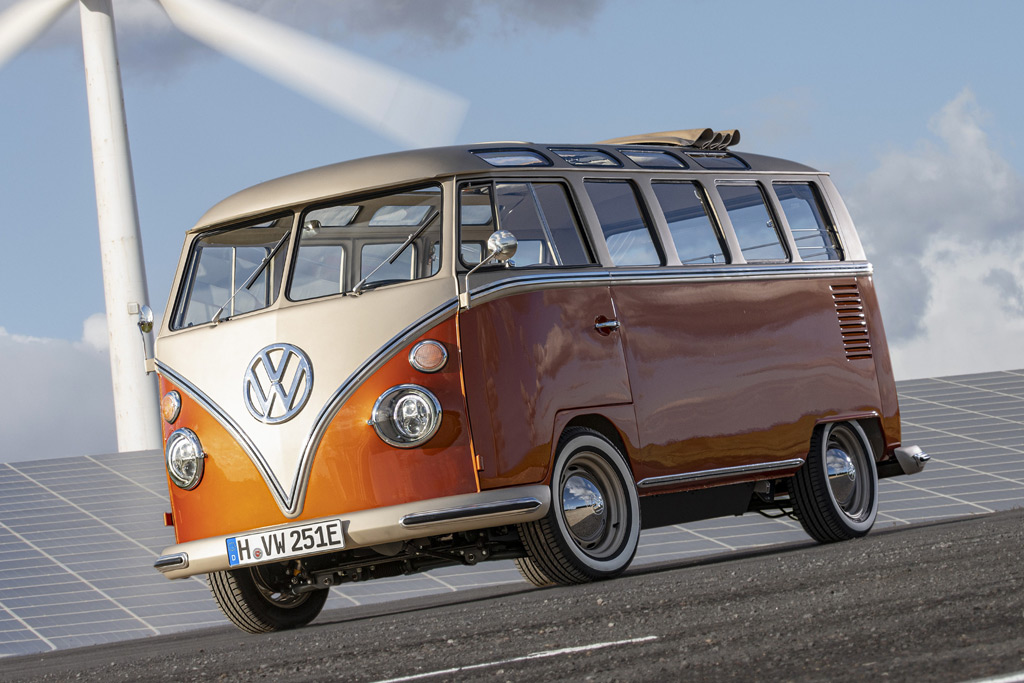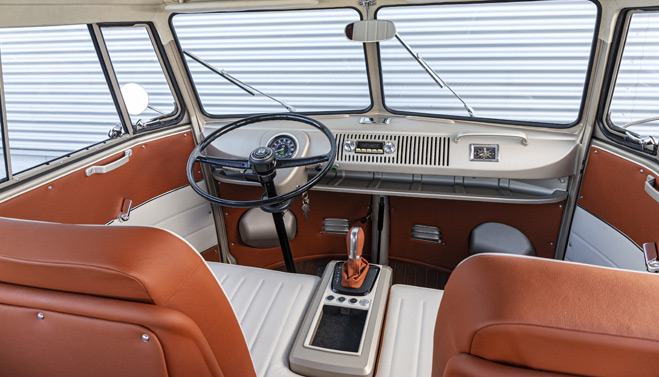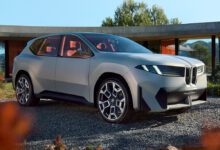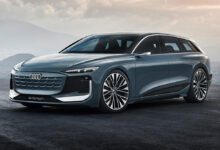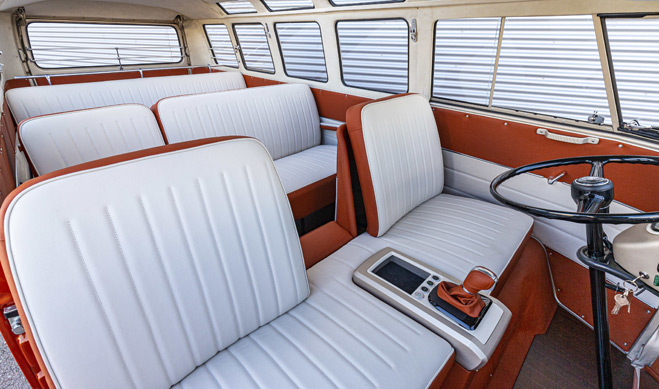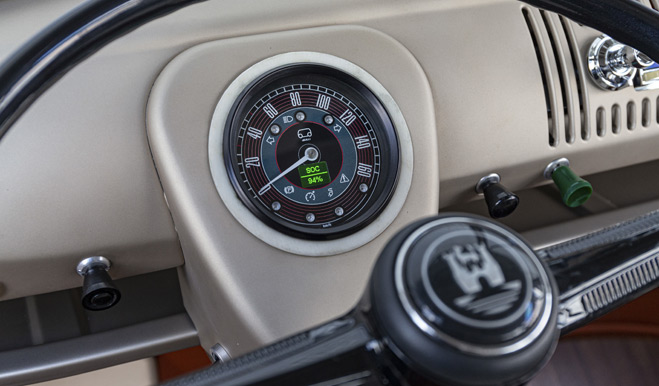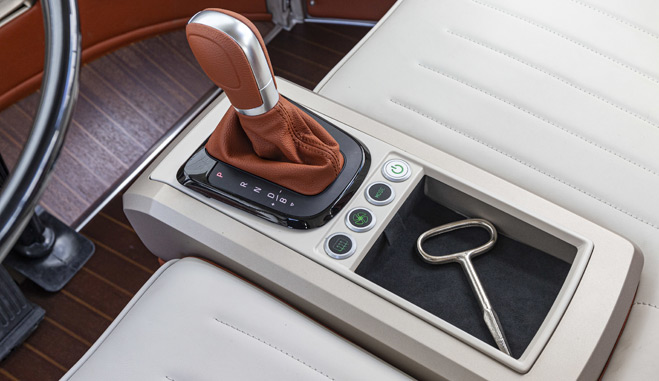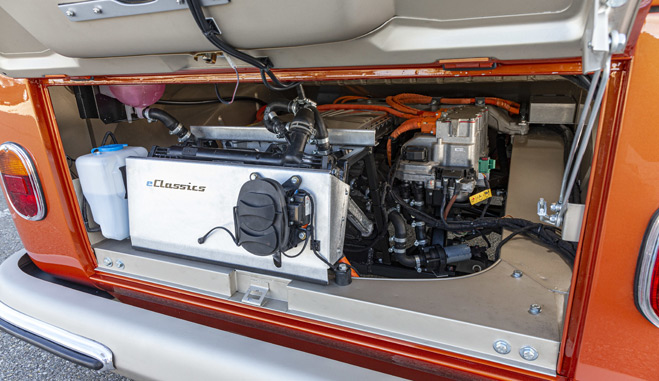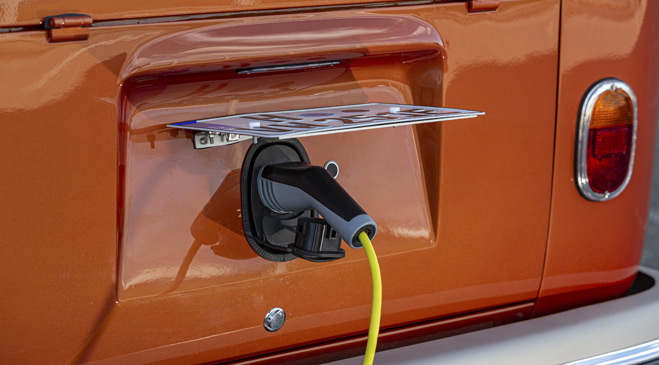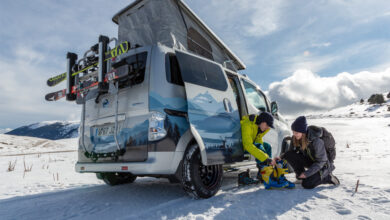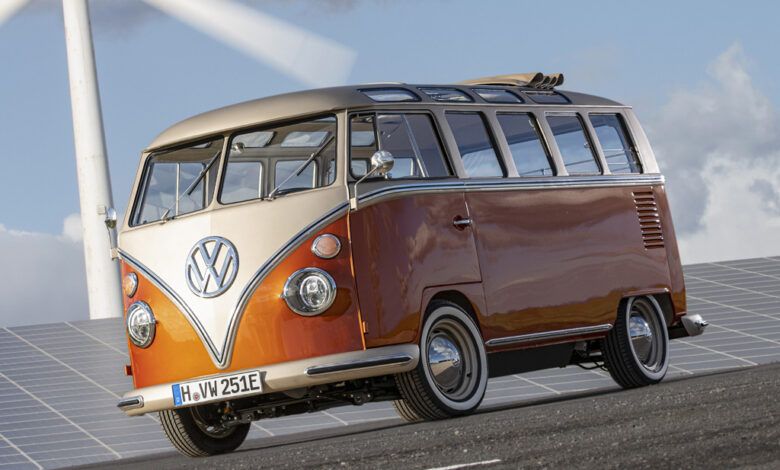
The new e-BULLI is a crossover that incorporates the classics and the latest solutions in the field of electric vehicles.
Volkswagen Commercial Vehicles (VWSD) introduces the e-BULLI: an all-electric, emission-free vehicle. The concept car, equipped with Volkswagen's latest electric vehicle drive systems, was based on the T1 Samba Bus, launched in 1966 and completely rebuilt. Techno Classica 2020 should have been the perfect venue to show this extraordinary car to a wider audience, however, due to the fact that they have been postponed, VWSD today presents all the most important information about the e-BULLI - verbal description and photos - in electronic form. By the way, important information for all fans of the Bulli model and electromobility: this car, based on the classics, and at the same time equipped with the latest solutions for electric drive, will be available for real purchase. eClassics, Volkswagen's commercial vehicle partner, plans to offer a T1 conversion and full T1 in the style of the new e-BULLI.
Volkswagen e-BULLY
It all started with a bold idea to equip the historic Bulli with a zero-emission powerplant and thus adapt it to the challenges of the new era. To this end, VWSD engineers and designers, together with powertrain specialists Volkswagen Group Components and eClassics, who specialize in the restoration of electric vehicles, have formed a dedicated design team. The team chose the Volkswagen T1 Samba Bus, built in Hannover in 1966, as the basis for the future e-BULLI. The car spent half a century on the roads of California before being brought back to Europe and restored. One thing was clear from the start: the e-BULLI was to be a true T1, but using the very latest Volkswagen electric drivetrain components. This plan has now been implemented. The car is an example of the great potential this concept offers.
Components of the new electric drive system
The 32 kW (44 hp) four-cylinder boxer internal combustion engine has been replaced in the e-BULLI by a quiet 61 kW (83 hp) Volkswagen electric motor. Comparison of engine power alone shows that the new concept car has completely different driving characteristics - the electric motor is almost twice as powerful as the boxer internal combustion engine. In addition, its maximum torque of 212Nm is more than double that of the original 1966 T1 engine (102Nm). The maximum torque is also, as is typical for electric motors, immediately available. And that changes everything. Never before has the "original" T1 been as powerful as the e-BULLI. The new vehicle thus becomes a quiet zero-emission travel companion while maintaining the unrivaled style of the classic Bulli.
The drive is transmitted through a single speed gearbox. The transmission is connected to the gear lever, which is now located between the driver's and front passenger's seats. Automatic transmission settings (P, R, N, D, B) are shown next to the lever. In position B, the driver can vary the degree of recuperation, i.e. energy recovery during braking. The top speed of the e-BULLI is electronically limited to 130 km/h. The T1 gasoline engine developed a maximum speed of 105 km / h.
As with the 1966 boxer engine on the T1, the 2020 e-BULLI electric motor and gearbox combination sits at the rear of the car and drives the rear axle. The lithium-ion battery is responsible for powering the electric motor. The useful battery capacity is 45 kWh. Developed by Volkswagen in collaboration with eClassics, the e-BULLI power electronics system in the rear of the vehicle manages the high voltage energy flow between the electric motor and the battery and converts the stored direct current (DC) into alternating current (AC). during this process. The on-board electronics are supplied with 12 V via a so-called DC converter.
All standard components for the electric powertrain are produced at the Volkswagen Group Components plant in Kassel. In addition, there are lithium-ion modules developed and manufactured at the Braunschweig plant. EClassics implements them in a battery system suitable for the T1. As with the new VW ID.3 and the future VW ID.BUZZ, the high-voltage battery is located in the center of the car's floor. This arrangement lowers the e-BULLI's center of gravity and thus improves its handling characteristics.
The CSS Combined Charging System allows fast charging points to charge the battery up to 80 percent of its capacity in 40 minutes. The battery is charged with AC or DC through the CCS connector. AC: The battery is charged using an AC charger with a charging power of 2.3 to 22 kW, depending on the power source. DC: Thanks to the CCS charging socket, the e-BULLI high-voltage battery can also be charged at DC fast charging points up to 50 kW. In this case, it can be charged up to 80 percent in 40 minutes. The power reserve on one full battery charge is more than 200 kilometers.
The new body is more comfortable, safer and allows for a more dynamic ride
Compared to T1, driving, handling, traveling e-BULLI is completely different. Mainly thanks to a completely redesigned chassis. Multi-link front and rear axles, shock absorbers with adjustable damping, threaded strut suspension, as well as a new steering system and four ventilated brake discs contribute to exceptional vehicle dynamics, which, however, are very smoothly transferred to the road. surface.
Volkswagen Vans changes both the look of the car and its interior.
In parallel with the development of the new electric drive system, VWSD created the e-BULLI interior concept, which is avant-garde on the one hand and stylistically classic on the other. The new look and related technical solutions have been developed by the VWSD Design Center in collaboration with Volkswagen Passenger Cars' Retro Vehicles and Communications Department. The designers have upgraded the car's interior with the utmost care and refinement, giving it a two-tone finish in Energetic Orange Metallic and Golden Sand Metallic MATTE paint colors. New details such as round LED headlights with integrated daytime running lights herald the entry of the Volkswagen Commercial Vehicles brand into a new era. There is also an additional LED indicator on the back of the case. It shows the driver what the charge level of the lithium-ion battery is before taking his place in front of the e-BULLA.
When you look out the windows at the eight-seat saloon, you will notice that something has changed compared to the "classic" T1. The designers have completely changed the concept of the interior of the car, without losing sight of the original concept. For example, all seats have changed their appearance and functionality. The interior is available in two colors: "Saint-Tropez" and "Orange Saffron" - depending on the chosen exterior paint. A new automatic transmission lever has been added to the console between the driver and front passenger seats. There is also a start/stop button for the motor. A solid wooden floor was laid over the entire surface, reminiscent of a ship's deck. Thanks to this, and also thanks to the pleasant light leather of the upholstery, the electrified Samba bus acquires a maritime character. This impression is further enhanced by the large panoramic convertible roof.
The cockpit has also been significantly upgraded. The new speedometer has a classic look, but the two-part display is a nod to modernity. This digital display in the analog speedometer shows the driver a range of information, including reception. The LEDs also show, for example, whether the handbrake is applied and whether the charging plug is connected. In the center of the speedometer is a cute little detail: a stylized Bulli badge. A number of additional information is displayed on a tablet mounted on a panel in the ceiling. The e-BULLI driver can also access online information such as remaining charging time, current range, kilometers travelled, travel time, energy consumption and recovery via the smartphone app or the corresponding Volkswagen web portal "We Connect". Music on board comes from a retro-styled radio that is nonetheless equipped with the latest technology such as DAB+, Bluetooth and USB. The radio is connected to an invisible sound system, including an active subwoofer.
Photos: Volkswagen Vance

